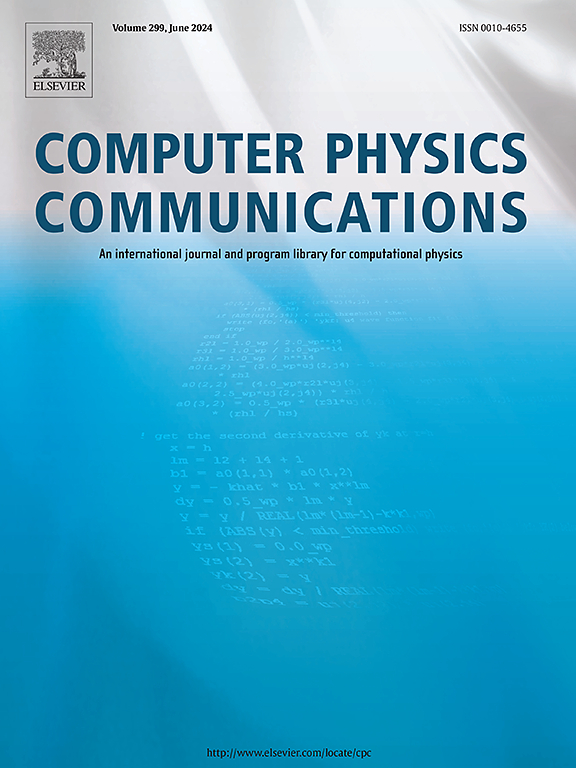A higher-order finite-element implementation of the nonlinear Fokker–Planck collision operator for charged particle collisions in a low density plasma
IF 3.4
2区 物理与天体物理
Q1 COMPUTER SCIENCE, INTERDISCIPLINARY APPLICATIONS
引用次数: 0
Abstract
Collisions between particles in a low density plasma are described by the Fokker–Planck collision operator. In applications, this nonlinear integro-differential operator is often approximated by linearised or ad-hoc model operators due to computational cost and complexity. In this work, we present an implementation of the nonlinear Fokker–Planck collision operator written in terms of Rosenbluth potentials in the Rosenbluth–MacDonald–Judd (RMJ) form. The Rosenbluth potentials may be obtained either by direct integration or by solving partial differential equations (PDEs) similar to Poisson's equation: we optimise for performance and scalability by using sparse matrices to solve the relevant PDEs. We represent the distribution function using a tensor-product continuous-Galerkin finite-element representation and we derive and describe the implementation of the weak form of the collision operator. We present tests demonstrating a successful implementation using an explicit time integrator and we comment on the speed and accuracy of the operator. Finally, we speculate on the potential for applications in the current and next generation of kinetic plasma models.
低密度等离子体中带电粒子碰撞的非线性Fokker-Planck碰撞算子的高阶有限元实现
低密度等离子体中粒子间的碰撞用福克-普朗克碰撞算子来描述。在应用中,由于计算成本和复杂性,这种非线性积分-微分算子通常由线性化或特设模型算子近似。在这项工作中,我们提出了用Rosenbluth势(Rosenbluth - macdonald - judd (RMJ)形式)表示的非线性Fokker-Planck碰撞算符的实现。Rosenbluth势可以通过直接积分或通过求解类似泊松方程的偏微分方程(PDEs)来获得:我们通过使用稀疏矩阵来求解相关的偏微分方程来优化性能和可扩展性。用张量积连续伽辽金有限元表示分布函数,推导并描述了碰撞算子弱形式的实现。我们展示了使用显式时间积分器成功实现的测试,并对算子的速度和准确性进行了评论。最后,我们推测了在当前和下一代动力学等离子体模型中的应用潜力。
本文章由计算机程序翻译,如有差异,请以英文原文为准。
求助全文
约1分钟内获得全文
求助全文
来源期刊

Computer Physics Communications
物理-计算机:跨学科应用
CiteScore
12.10
自引率
3.20%
发文量
287
审稿时长
5.3 months
期刊介绍:
The focus of CPC is on contemporary computational methods and techniques and their implementation, the effectiveness of which will normally be evidenced by the author(s) within the context of a substantive problem in physics. Within this setting CPC publishes two types of paper.
Computer Programs in Physics (CPiP)
These papers describe significant computer programs to be archived in the CPC Program Library which is held in the Mendeley Data repository. The submitted software must be covered by an approved open source licence. Papers and associated computer programs that address a problem of contemporary interest in physics that cannot be solved by current software are particularly encouraged.
Computational Physics Papers (CP)
These are research papers in, but are not limited to, the following themes across computational physics and related disciplines.
mathematical and numerical methods and algorithms;
computational models including those associated with the design, control and analysis of experiments; and
algebraic computation.
Each will normally include software implementation and performance details. The software implementation should, ideally, be available via GitHub, Zenodo or an institutional repository.In addition, research papers on the impact of advanced computer architecture and special purpose computers on computing in the physical sciences and software topics related to, and of importance in, the physical sciences may be considered.
 求助内容:
求助内容: 应助结果提醒方式:
应助结果提醒方式:


